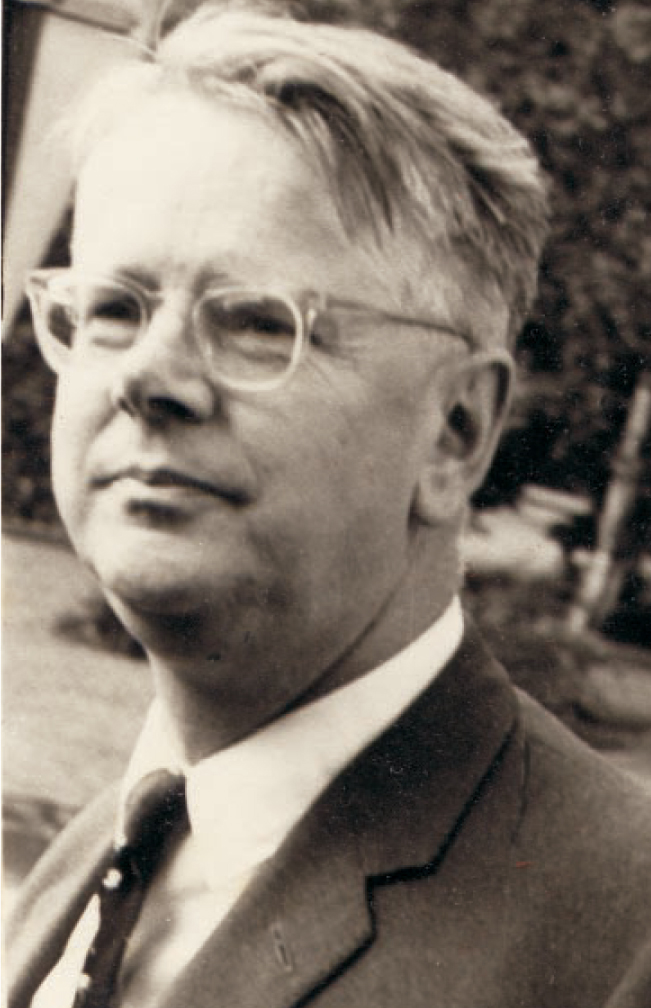Dirk ter Haar
DOI: 10.1063/1.1688082
Dirk ter Haar, emeritus reader in theoretical physics at Oxford University, died peacefully on 3 September 2002 in the Dutch city of Drachten following a family birthday celebration. The cause of death was pulmonary embolism. He contributed to diverse areas of theoretical physics and played a leading role in the dissemination of the subject.
ter Haar was born in Oosterwolde, the Netherlands, on 22 April 1919, the son of a pastor and one of the first female law graduates in the Netherlands. In 1939, he received his bachelor’s degree in mathematics and physics from the University of Leiden, from which he also received his master’s (1941) and doctoral (1948) degrees. His doctoral thesis entitled “Studies on the Origin of the Solar System” was written under the supervision of Hendrik Kramers.
In 1946, ter Haar became a research fellow at the Institute for Theoretical Physics (now the Niels Bohr Institute) in Copenhagen, and from 1947 to 1950 was a visiting associate professor of physics at Purdue University. He was appointed lecturer in theoretical physics at the University of St. Andrews in 1950. Six years later, he went to Oxford as a university lecturer in theoretical physics, and in 1959, he became a university reader there and a fellow of Magdalen College. ter Haar received his DSc in 1960 from Oxford.
His research interests spanned a wide area, including astrophysics and statistical, condensed matter, and plasma physics. He had an encyclopedic knowledge of physics and was quick to take up promising new areas of research. He played a major role in communicating recent advances within the physics community and regarded his writing of review articles and books as an activity as important for the advancement of science as his original papers. Perhaps ter Haar’s best known work is Elements of Statistical Mechanics , first published by Rinehart in 1954. He was a tireless editor and translator; among the books he translated is Quantum Mechanics (North-Holland, 1957) by Kramers.
Because of his knowledge of Russian, ter Haar often learned of advances by Soviet scientists before they were generally accessible to most Western scientists, and he translated and edited many Soviet works, among them the collected works of Lev Landau and of Pyotr Kapitsa.
ter Haar was a founding editor of the journals Physics Letters (1962) and Physics Reports (1971), and was general editor of the International Series of Monographs in Natural Philosophy, published by Pergamon Press. He retired from his posts as university reader at Oxford and fellow of Magdalen College in 1986.
In recognition of his work, ter Haar was elected to membership in the Royal Society of Edinburgh in 1952. In 1966, he was elected a corresponding member of the Royal Dutch Academy of Arts and Sciences.
ter Haar placed a great deal of emphasis on teaching at both the undergraduate and graduate levels. He devoted a large proportion of his time to lectures and undergraduate tutorials. His policy with graduate research was to throw his students into the deep end: He would assign a broad topic such as “problems in the theory of collective behavior” and leave it up to his students to not only solve the thesis problems themselves, but to come up with the problems in the first place. At the same time, he was extremely solicitous about the well-being of his students and their families, as we can attest from our personal experiences as his former students. In particular, many of his students from other countries looked up to him as a surrogate father.
ter Haar would not tolerate sloppy thinking. Many students will remember two plaques in his office: “Behold the turtle, it advances only when it sticks its neck out” and “Why be difficult when, with a little effort, one can become impossible?” Those of us who had the privilege of being tutored or supervised by him cherish the memory of a supportive and loyal friend.


More about the Authors
Frederick K. Lamb. University of Illinois, Urbana-Champaign, US.
Anthony J. Leggett. University of Illinois, Urbana-Champaign, US.
Christopher J. Pethick. NORDITA, Copenhagen, Denmark.
